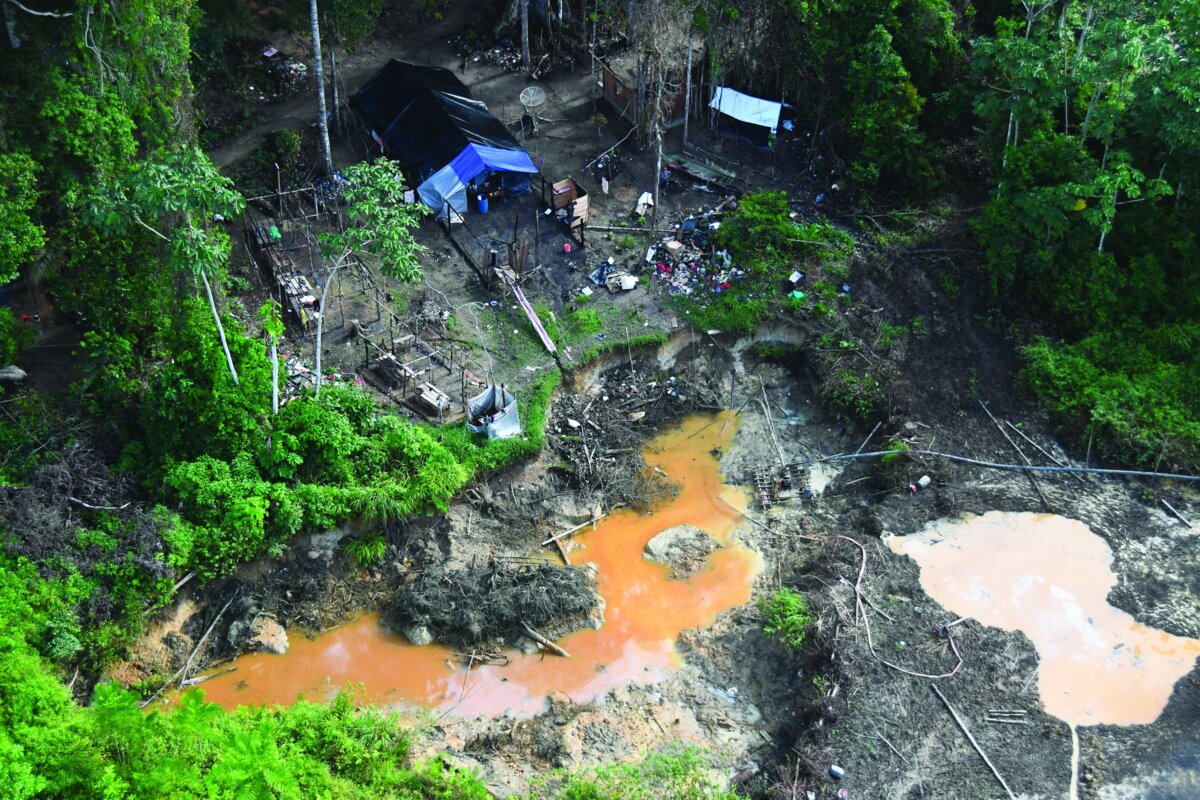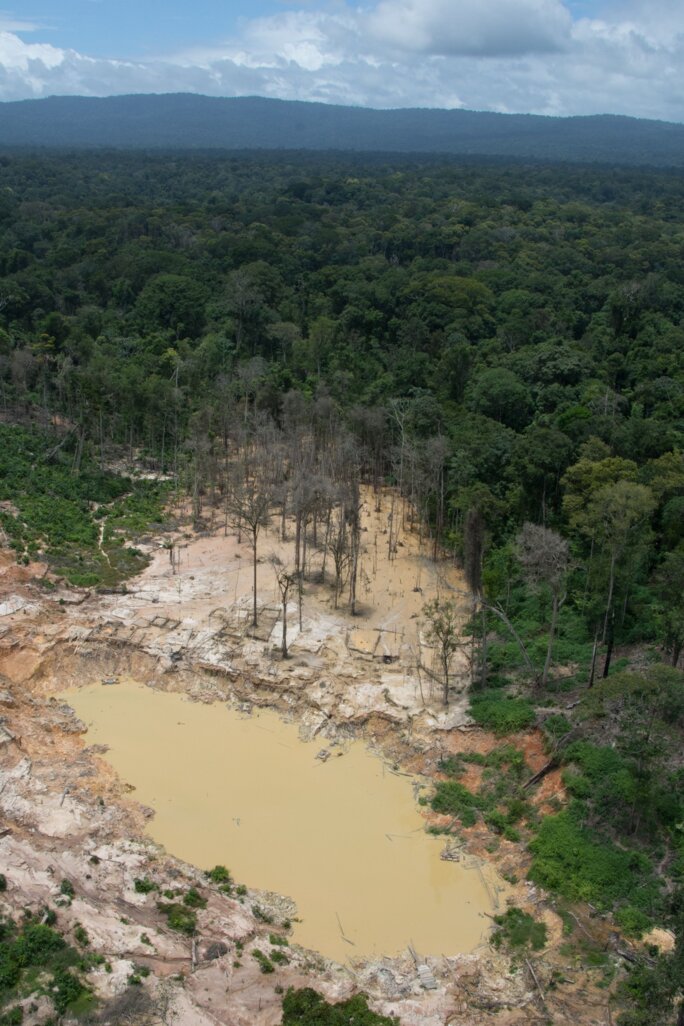Seen from the sky, it is an astonishing sight. French Guiana, an overseas département - county - and region of France, is a vast, seemingly unending green space which is home to more than 70 types of forest habitat. This land to the north-east of the Amazon contains one of only three or four complete tropical mountain forest habitats that remain in the world.
But from the sky you can also see the scar formed by Petit Saut, the hydroelectric dam which led to the submersion of 135 square miles of forest – an area equivalent to the whole of Philadelphia – during the presidency of François Mitterrand to meet the energy needs of the growing European space sector in South American France. This dam is considered to be one of the least profitable in the world in terms of the relationship between its size and the energy it produces. It also produces a lot of methane and indeed emits almost as much greenhouse gas as a conventional fossil fuel power plant of the same output.
The French government's overseas territories minister Annick Girardin, the three Members of Parliament representing Guiana for President Macron's ruling La République en Marche party and the president of the Guiana region all like to claim that Guiana has been “preserved”. This echoes the position adopted by the French head of state during his row with Brazil's Jair Bolsonaro over the burning fields in the Amazon during the G7 summit in August. But critics disagree.
“We hear great speeches today but we note that the resources committed by the French state are not enough to counter the ferocious appetite of the gold panners,” said the president of Guiana's Amazonian Park scientific committee, Marie Fleury.

Enlargement : Illustration 1

Since the 2000s Guiana has - like other areas with gold in the Amazonian region, albeit to a lesser extent - suffered from an “uncontrolled gold rush and illegal exploitation spread across large parts of the territory”, says the wildlife and environment charity WWF. On top of harming local populations, this exploitation of the land causes 13 tonnes of mercury to seep into the waterways each year, say campaigners, as well as the destruction of more than 12,000 hectares (nearly 30,000 acres) of ancient forest – equivalent to the south-west France city of Toulouse – and 1,800 km (about 1,100 miles) of waterways.
The great and growing scarcity of animals to hunt in the gold-mining zones and the poisoning of carnivorous fish by mercury – two crucial resources for the more than 3,000 inhabitants of the forest – are just as alarming.
It is estimated that as many as 10,000 people are involved in gold prospecting or in activities linked to the gold workers' presence, either in the forest or in the villages that perch along the banks of rivers. These populations include small-time entrepreneurs, gold dealers, dugout canoe operators, prostitutes and hired hands, some of them with military-grade weapons.
Observations from flights over the Guiana Amazonian Park – a national park whose creation was announced by President Mitterrand in 1992 at the Earth Summit – suggest that the number of illegal gold prospecting sites has increased since 2008. “They always respond to us in the same way: 'We'll put in the resources, the resources have been provided...' but in fact the results are not good enough and we end up getting used to a state that remains unacceptable, because this has been going on for 20 years,” says Marie Fleury, with irritation.
Indeed, in a sign of how bad things are, in 2018 the prefecture – state representative - for Guiana failed to provide a detailed breakdown of the environment impacts in the national park recorded the previous year. This is despite the fact that in previous years it has bowed to the demands of environmentalists and published these findings annually.

Enlargement : Illustration 2

As for the legal mining activity, which is destructive and causes pollution, this is encouraged and supported by the the state and by the majority of Guiana's elected representatives. The group representing local peoples, the Organisation des Nations Autochtones de Guyane, and the council representing Amerindian people, the Grand Conseil Coutumier, have highlighted what they call the “hypocrisy” of those who signed a recent article in the newspaper the Journal du Dimanche whose signatories say they have “made the decision to have social and environmental transition” but who nonetheless “support” the gold mining industry.
“The mining permits provided by the government threaten more than 360,000 hectares [around 889,000 acres] of Guyanese territory,” say the environmental groups Maiouri Nature and Or de Question. They are unhappy about an inter-ministerial decree issued on April 4th 2018 which relaxed the rules relating to the environmental evaluation of “projects and plans in Guiana that are likely to have particular repercussions on the environment”.
In addition to the large-scale mining projects which are protected, around thirty exploitation permits – known as AEXs – are signed each year by the prefect. Since 2014 these licenses to exploit the land for a maximum of eight years, and which generally affect around ten to 50 hectares – 24 to 123 acres – have been subject to simplified, accelerated and variable procedures.
The gold prospectors expect to find around a kilo of gold per hectare of forest they clear in a month. Then, at the end of the mining process, the dead and sterile land should in theory be covered in vegetation again. “The state hands out AEXs galore. We're bleeding the land dry, it's a complete and utter scandal,” says Olivier Tostain, president of the regional scientific body the Conseil Scientifique Régional du Patrimoine Naturel (CSRPN).
According to the International Union for Conservation of Nature 166 land and marine creatures in Guiana are threatened by human activities of all kinds. Some 16% of marine mammals are under threat as well as 13% of birds and freshwater fish.
According to the Center for the Study of Biodiversity in Amazonia the “conversion of the land and the destruction of the forest for the timber industry” is leading to “massive deforestation” though it says that both are having “minimal impacts on the forests of French Guiana”.
However, a Guyanese naturalist, who asked to remain anonymous, said: “If you look at the issue of conservation from the angle of forestry, you can say it's all right, but when it comes to the quality of the rivers the assessment is absolutely alarming, and if one talks about 'dead forests' - those where there are no more game animals or seed-spreading animals – then the assessment is just as alarming.”
Rémi Girault, president of the environmental group Guyane Nature Environnement, said: “There are several attempts to move in the right direction with some work on updating environmental regulations, the stopping of oil extraction and the introduction of a hunting license, but we still don't have a ban on [the use of cyanide in gold mining] and there are disastrous projects for the environment which regularly crop up, such as a second hydroelectric dam.”
Girault added: “The Guiana local authority possesses major environmental expertise but it's only been put to use on the margins. The Regional Agency for Biodiversity still doesn't exist, more than 20 years after the plan for one was sketched out. Yet at the time Guiana was ahead of its time and innovative with this concept.”
In 2008 Nicolas Sarkozy's government decided to bring in a gold tax to help fund a regional “environmental conservatoire” and promote actions in favour of the environment. But more than a decade later nothing has come of it. The tax was indeed introduced – four or five years ago say the mining operatives' federation in the region – and raises around 400,000 to 600,000 euros a year. But according to different sources this money has simply between swallowed up in the Guiana local authority's budget.
- The French version of this article can be found here.
English version by Michael Streeter


